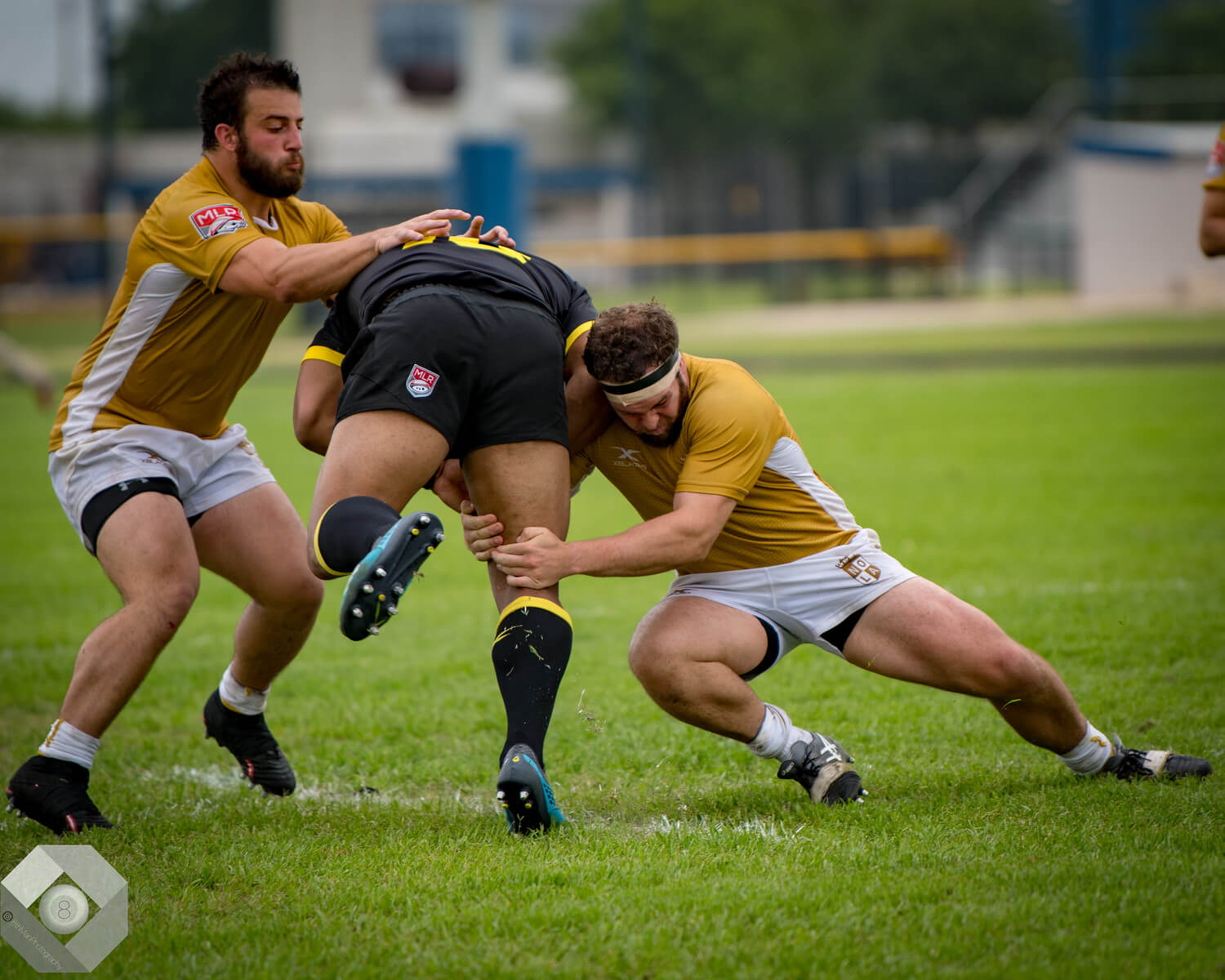

In Southeast Louisiana, most all of us are familiar with football, which in the overall world of sports is called American Football.Rugby is football, too, just with more players on the field and different rules. In fact, the game Americans know as football grew out of rugby football, Knowledge of the American game can in fact be useful when watching Rugby.
THE BALL IS IN CONSTANT MOTION: Unlike American football, Rugby moves constantly. But, to keep track of how the play is moving, think of every time the ball touches the ground as a “down” in football–meaning the play is recycled and the team with the ball keeps trying to find holes in the defense. Rugby has a term for this, called “phases,” so when the home team scores a try after 20 phases of ball movement, you know it was well deserved!
RECYCLE, RECYCLE,RECYCLE: As soon as the player is tackled, they must move the ball backwards to an arriving teammate. This must happen quickly! The referee is looking to move the game at all times, and a failure of the team with the ball to recycle to a teammate quick enough results in a penalty for holding on to the ball too long. In American football, of course the play stops once the player hits the ground.
FIELD GENERAL: Many times, the Scrumhalf, or #9 player, is seen at the breakdown (or area of the tackle) ready to pass the ball to a moving team mate or looking for holes in the opposition defense. This is no accident. The Scrumhalf is kind of like a quarterback in this regard, a player with superior ball handling skills, who are adept at handling the ball securely until the pass is made. Remember, in Rugby any “fumbling” of the ball forward results in a stop in play and results in a scrum put in for the other team.
DON’T GO ROGUE: One of the most exciting plays in Rugby is when one players breaks the gain line (think “line of scrimmage”) and starts running in the open field.This is wonderful to watch, but the player with the ball must be aware of who is lurking behind. A tackled player with no teammates nearby risks a turnover, as the other team is able to contest the ball at the breakdown. Many a rugby player looking for glory has been tackled before the try line and has outrun the support of team mates.
IT’S A LONG WAY TO THE TOP IF YOU WANT TO ROCK AND ROLL: Since forward passes are forbidden in rugby, scoring a try is difficult much of the time. Any meters gained is GOLD (pun intended!) and gets the team closer to the try line. Watch for the movements across the field and on diagonal lines as the teams battle for field positon.
EVEN SUPERMAN HAS KRYPTONITE: Rugby encourages open play–the touch line (or sidelines) during play is like Kryptonite to Superman.Touching it with the ball in one team’s possession is a turnover–kind of like in basketball.Rugby players in possession of the ball near the touch line will try hard not to be pushed out, and of course the opposition would love to do the pushing. You’ll know a ball has entered touch when the touch judge raises their flag.
A PUNT IS A PUNT: Punting the ball the relieve pressure playing in your own end in rugby is similar to American Football. A team in possession of the ball deep in their own territory may just seek to relieve the pressure by punting the ball and going on defense. If the team with the ball is within their own 22-meter line, they can punt the ball to “flip the field.” Often times, this is kicked high in the air and out in to touch. But…
A PUNT IS A PUNT PART DEUX: The team with the ball deep in their own half may punt the ball sky-high just to get it out of bounds. This carries a warning. If the player is across the 22m line, a kick out of bounds “on the full” means it goes back to the place where it was kicked–back deep in their own territory and the ball is turned over. Kicks made across the 22m line must bounce first once on the field of play before going into touch for the ball move to that spot where it went out.
BIG BROTHER IS WATCHING: Remember that Rugby referrees make calls that may seem like the reverse in American Football.When he points in your team’s direction, that’s a good thing.It’s not a penalty ON your team, it’s a penalty against the other team FOR you.
KNOW YOUR NUMBERS Each number on a Rugby starting 15 corresponds to their position on the pitch.1-8 are the players that take part in the scrum, they are also called “forwards.” Players 9-15 are called “backs” because they play away from the scrum.
TRY AND TRY AGAIN: The term touchdown in American Football is called a try in Rugby, but there is a very easy way to remember if one is scored. The player literally must touch the ball down to the ground in the in-goal area (the endzone, if you will) to score a proper try. The scoring player must touch the ball down with hand or arm pressure, even if the player loses possession of the ball after it’s been downed.
LOOK MOM, NO PADS! The first thing you notice is that rugby players don’t have pads and maybe half of the players wear head protection that looks nothing like a football helmet. In Rugby you must tackle with your arms–this reinforces correct tackling techniques and minimizes injuries. And, no you can’t body-slam your opponent. If it appears that a tackler is taking the player “horizontal,” then they must release the player or risk a penalty.
Rugby Outsider is a writer, blogger and Rugby fanatic. He can be found on Twitter @Rugbyoutsider
Rugby Outsider | Photo 8 Man Photography
As we reflect on this incredible season, we want to extend our
New Orleans, LA - NOLA GOLD faced the Chicago Hounds in their first
In this candid interview, Jarred Adams shares his early beginnings, the significant
With Major League Rugby (MLR) on an international break, several NOLA Gold
As we enter Week 19, we're excited to welcome Ed Fidow, our
